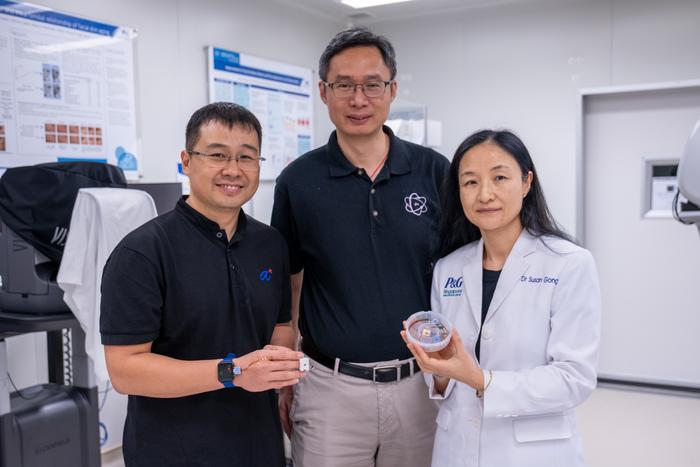Meet “HapSense,” a new innovative wearable skin sensor that is being rolled out to mark the 10th Anniversary of Procter & Gamble (P&G) Singapore Innovation Centre (SgIC).
The patent-pending device allows scientists to speed up their analysis of skincare cosmetic products by up to 10 times and yet costs just a fraction of the existing expensive skin-testing panels.
Typical skin-test panels consist of skincare product reviewers who represent a defined user demographic depending on the nature of the study. Unlike conventional methods that rely on subjective assessments like consumer surveys, HapSense offers precise, objective, and quantifiable measurements of tactile sensations for a more accurate understanding of touch.
HapSense was developed by P&G SgIC, Nanyang Technological University, Singapore (NTU Singapore), and the Agency for Science, Technology and Research (A*STAR). The device is shaped like a signet ring and worn on the fingertip. The sensor component of HapSense is attached to a smartwatch-like module. As the sensor glides along the skin or any surface, HapSense captures real-time data on friction and pressure that is independent of the consumer’s perceptions. This multidimensional sensing and tracking provides objective insights into the effects of a skincare product on the skin.
By further harnessing advanced algorithms, scientists can perform big data analysis using consistent data across the effects of different products over the years to guide the formulation of skincare products or personalization of skincare regimes for different skin types and demographics. HapSense also has the potential to expand its applications to testing surfaces and products in categories beyond skincare such as fabric care, hair care, baby care, or feminine care.
Since its inception in 2014, the P&G SgIC has helped sire the next generation of products from Pantene, Olay, SK-II, and more.
PHOTO CAPTION:
From left: Dr Liu Zhihua, A*STAR IMRE; NTU Professor Chen Xiaodong, Director, Innovative Centre for Flexible Devices; and Dr Susan Gong, P&G Singapore Innovation Centre; holding the Hapsense device.
PHOTO CREDIT: NTU Singapore


